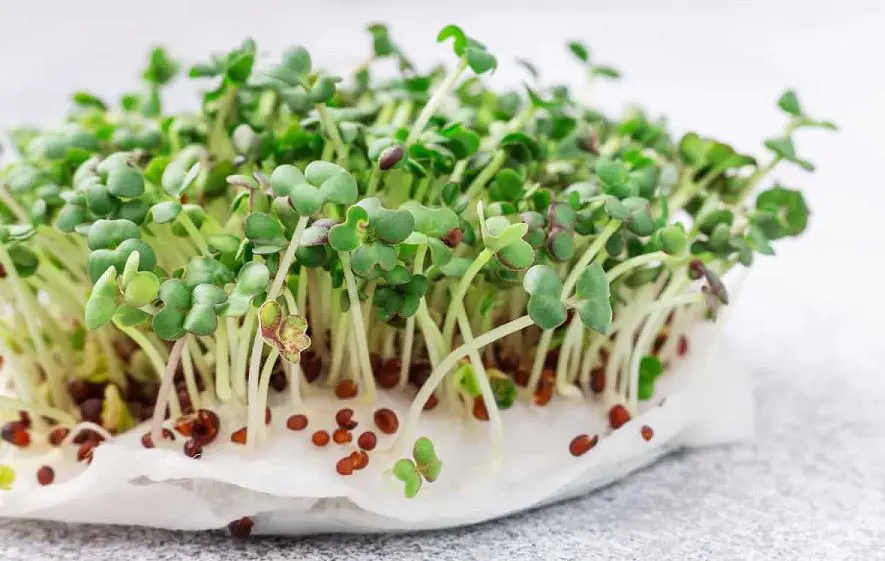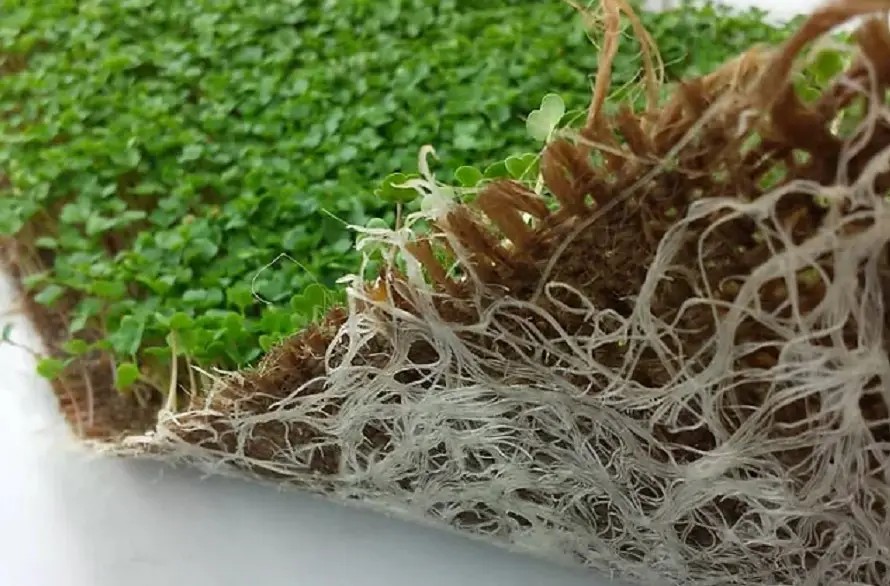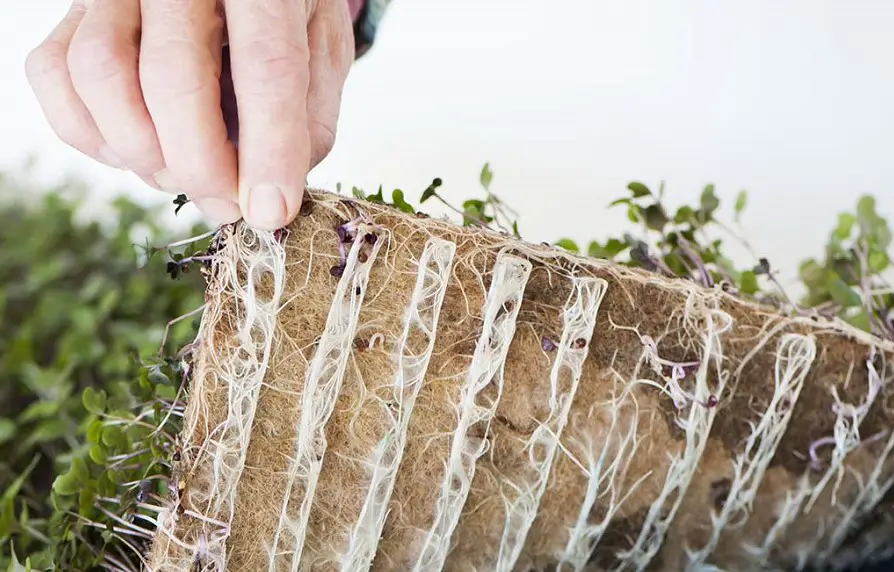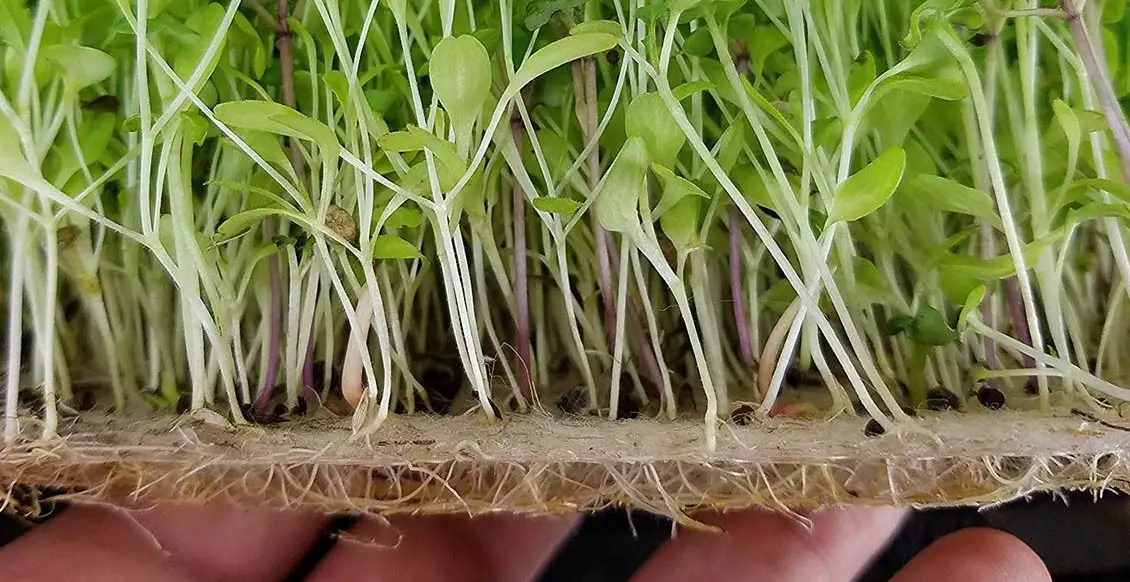When you decide to grow microgreens or make a microgreens business, the first thing you should thoroughly think about is what growing medium you should use. If there are several of them?
Yes, there are several growing mediums that you can use for microgreens. For example, you can choose soil, vermiculite, coconut coir, and hydroponics for microgreens. The main question is: Which growing mediums are the best?
If you are asking this question, then this article is written for you.

Contents
Available growing mediums for microgreens
Before we go to the best growing material where you can grow microgreens, we need to look through several available growing mediums which are simply can be good for microgreens.
Soil
Soil is one of the most known options for growing greens and especially for growing microgreen seeds.
Many people are even absolutely sure that this old but proven growing material is the best for microgreens.
Let’s figure out why.
Why should you use soil?
Soil has a lot of advantages as a growing material.
Firstly, this material is easy to work with, and there is not so much effort to put in.
Secondly, soil, especially, organic potting soil or a potting mix, doesn’t really need any extra nutrients, just water.
To tell you more about potting soils, it is important to mention, that most of the potting soils and potting mix that you can buy are sterile. It means that you absolutely don’t have to worry about such things as pests, they are not a threat to microgreens that are in this growing material.
Thirdly, the soil is simply able to give you the best product, if you don’t give up to care a little about microgreens. Don’t be afraid of larger seeds there – they will grow, too.
So, as you can see, the abilities of the soil are noticeable.
Possible problems with soil
Unfortunately, you should consider that soil and every potting mix with soil is something that will give problems, too. It will make the mold grow. It is a very messy material, which can give you some dirt, especially when growing microgreens indoors.
If you don’t like these disadvantages, then choose other growing mediums.
Where can you buy soil?
One of the most favorite microgreens growers in the USA is “Happy Frog potting soil” (Smart Naturals company). If you are interested in buying potting soil or potting mix from these microgreens growers, then you can easily find them in Walmart stores or any garden center.
The price of the soil is $1 per tray. It is quite affordable, as you can see.
Sterilizing soil
So, another option for growing medium is sterilizing the soil.
Why do people tend to do it? Because it lets you grow microgreens there one more time, and because it is simply the more safe environment for microgreens.
How to sterilize soil?
First method
You can do it by baking it in an oven preheated to 180 degrees Fahrenheit. You should do it for thirty minutes.
Second method
Or, if you have a large batch, you should lay out plastic sheeting in a sunny spot and then cover them with a layer of dirt, get it up to four inches thick.
Then you need to get it moist and to do so just spray water on them. Cover them again with one more plastic sheet. Weigh it with several rocks. Then you should leave them that way to bake in the sun for four weeks at least. As a result, you will have sterilized soil.

Hemp mats
Hemp mats are a material made of woven hemp fiber. This material is good at holding water, and it will help you with watering microgreens and which is a perfect condition for hydroponic growing.
This material is easy to use, even when you bury the seeds into it. Another advantage of hemp mats is that they provide the correct amount of air, which is great for microgreens, as well as hydroponic mats.
So, hemp mats can be a perfect option for you, if you want your microgreen seeds to grow fastly and don’t like messy work.
Coconut coir
Coconut coir is a growing medium made from the fiber of coconuts, as you could guess, other contains peat moss, perlite, and pumice.
Coco coir may be a good option for you, but, to be honest, not as good as soil.
Advantages
Coconut coir is a material that cannot be overwatered, so you don’t need to worry about this problem. Coco coir is a light material, which is easy to move if you need to.
Coco coir is thick, which is good because it gives roots the ability to penetrate.
And microgreens can grow in the coconut core quite fast if you treat them correctly. If you want to use an ebb-flood hydroponic system, it is the best option for you.
Disadvantages
Also, this material requires work to do with it. After you bought it as coco coir liner and sheets, you need to roll them out, make the correct length and then water it.
If you buy them in blocks, all you have to do is just water them.
But there is something important to mention – coconut coir almost always doesn’t have many nutrients, so, when you water it, you need to pour them with nutrient-rich water, otherwise, your microgreens will have some problems while growing.
The coconut coir is not expensive at all, it costs about $0.60 per tray. So, if you use it as your growing material, it would be quite affordable for you.

Bamboo grow mats
Bamboo grow mats are a relatively good option for microgreens. It is renewable, it is clean. It is not hard to work with bamboo grow mats. Also, the material is quite light, which is why it is easy to buy and transfer.
It is getting wet easily and quite quickly.
Possible problems with bamboo grow mats
But, unfortunately, it is tight, not thick, which means that roots will have problems in penetration.
And it is proven, that microgreens don’t seem to enjoy this growing material, they don’t grow fast, and they don’t grow strong. So, you will probably not be impressed with the result of growing.
Burlap
Burlap as a growing medium is one of the cheapest options that you could use. It costs only $0.25 per tray, almost nothing to pay. But the thing is that it is not as easy to use as the soil. You need some skills there. Or you just need to follow the instructions carefully.
The first thing you need to know is that burlap is a woven fabric, and it has several strict requirements as a growing material.
To use burlap as a growing material and to use it correctly, you need to build certain conditions because you have to find a correct way of controlling temperature and humidity. If any of this is wrong, you will not have the result that you want.
So, be careful, follow the detailed instructions on how to use burlap, and ask for help if you have any complications.
So, let’s get to the point. You need to add fertilizer to burlap since you want to have as much utility and scale as the soil yield.
Then you will need your burlap to be in the standing water. To have it, you will have to build an irrigation system if you don’t already have one. It is a strict requirement, and you cannot grow microgreens using burlap as a growing material.
If you are a beginner at growing microgreens, then using burlap and trying to deal with it is not recommended. It is hard to use it even for the specialist, and it would be especially painful and unmotivating if you use it as a beginner.
You probably should try to use other growing mediums that are much easier to use.

Vermiculite
Vermiculite is another option for growing microgreens. What you need to know about this growing material, first, is that this material is a soil-less growing medium. The material is mineral with a neutral pH.
It has two main advantages – vermiculite is mold resistant and already sterile. Also, it is important to mention, that vermiculite is quite good at retaining water, and has a small number of other minerals, like potassium and magnesium.
Usually, vermiculite is used as an additive to soil to get better aeration. But you can be absolutely sure – you can use it as a growing material as well. Vermiculite is good among growing mediums.
Rockwool
Rockwool is not a natural material, it is a man-made material. Originally, it was not made as a growing material, it was made for insulation. And it may be harmful to your health, especially to the eyes and the skin.
And it is definitely not for growing microgreens, though some people use it and this is why it is considered an available growing material. But it is not recommended.
Biostrate
Biostrate is a felt textile that was made specifically for growing. It has several advantages: it is biodegradable, and pH balanced. But at the same time, the material is hard to work with. If you don’t treat it well, it will dry out quickly and will not absorb water.
But it is also cheap: it costs only $0.85 per tray. So, if you know, how to work with it, then it will be a good option for you.
So, which growing mediums should you choose?
One of the best microgreens growing mediums that you should choose is soil, even for growing indoors. It is a little messy, but messiness is the last problem that you would worry about.
Microgreens grow there fastly. Soil is not hard material to work with. It is full of nutrients, so you don’t have to buy them and add them, overpaying and working more.
Soil also can be reusable material, especially, when you sterilize it yourself.
And by the way, soil can be composted, as well as burlap, vermiculite, and coir, but among all other growing mediums oil is still better than others.

Frequently Asked Questions
What growing mediums is best for microgreens?
The best growing medium for microgreens is soil. Soil is contented with a lot of nutrients, and soil is easy to use. You need to put minimal effort into growing microgreens in soil.
What is the best soil for growing microgreens?
The best soil is sterilized soil. It has all of the advantages of the usual soil, but it also can be used twice. So, if you choose soil as a growing material, pay some money or time to make it sterilized.
Can you grow microgreens without medium?
No, you can’t. The medium is the main requirement for growing microgreens.
In conclusion: soil helps you with microgreens
Sterilized soil is the best growing medium for you if you are ready for microgreens. It is an easy material to work with, it is full of nutrients, and it will certainly give you microgreens, which grow fast and which are healthy and strong.
So, if you want to make your home better with micro greens, then the soil will be a very good option to use.




When I first started growing microgreens, I used soil. But I was still worried that the soil could get into the food. And, to be honest, I tried using the same soil for the next seeding and I must admit that this really affects the result in a not the best way.
Then I started using hemp mats and am very satisfied.
But recently I found special low plastic containers in which you can grow microgreens without soil and other things! Only water! But I’m worried that plain water can’t provide extra nutrients to microgreens. What do you think of this method?